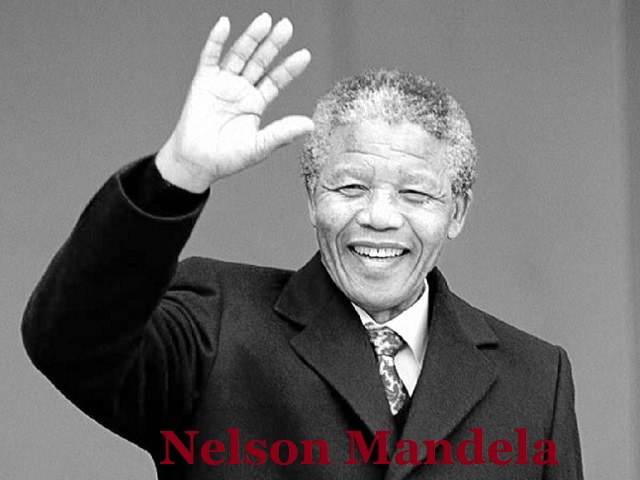Nelson Mandela President of South Africa- Bio, Age, Death

Nelson Mandela was a South African anti-apartheid revolutionary, political leader, and philanthropist who served as President of South Africa from 1994 to 1999. He was born as Rolihlahla Mandela on July 18, 1918 in Mvezo, South Africa, and was given the name Nelson by a schoolteacher later in life.
Mandela was born into the Thembu royal family and was educated at the University of Fort Hare and the University of the Witwatersrand. He became involved in anti-colonial and anti-apartheid activism, and in 1944, he co-founded the Youth League of the African National Congress (ANC), a political party that fought against the white-minority government’s discriminatory policies.
In the 1950s, Mandela was arrested and charged with treason for his involvement in the ANC’s activities, but he was acquitted in 1961. After his acquittal, he helped to form Umkhonto we Sizwe, the armed wing of the ANC, and he played a key role in the organization’s campaign of civil disobedience against the government.
In 1962, Mandela was arrested again and charged with sabotage and conspiracy to overthrow the government. He was convicted and sentenced to life in prison, and he spent the next 27 years in prison, mostly on Robben Island.
Mandela became a symbol of the anti-apartheid movement while he was in prison, and his release in 1990 was seen as a major victory for the movement. After his release, he worked to negotiate an end to apartheid and a transition to a multi-racial democracy in South Africa.
In 1994, Mandela was elected as the first black President of South Africa, and he served one term in office before retiring in 1999. During his presidency, he worked to address the issues of poverty, inequality, and HIV/AIDS in South Africa, and he also worked to promote reconciliation and forgiveness between the country’s different racial groups.
Mandela received numerous awards and accolades throughout his life, including the Nobel Peace Prize in 1993. He is widely regarded as a global icon and one of the greatest leaders in modern history. He died on December 5, 2013 at the age of 95.
FAQs
When and where was Nelson Mandela born?
Nelson Mandela was born on July 18, 1918 in Mvezo, South Africa. Mvezo is a small village located in the Eastern Cape province of South Africa, about 300 kilometers east of Cape Town. Mandela was born into the Thembu royal family and was given the name Rolihlahla Mandela at birth. He was later given the English name Nelson by a schoolteacher. Mandela went on to become a prominent anti-apartheid revolutionary, political leader, and philanthropist, and he served as President of South Africa from 1994 to 1999. He is widely regarded as a global icon and one of the greatest leaders in modern history.
When did Nelson Mandela die?
Nelson Mandela died on December 5, 2013 at the age of 95. Mandela was a South African anti-apartheid revolutionary, political leader, and philanthropist who served as President of South Africa from 1994 to 1999. He was born on July 18, 1918 in Mvezo, South Africa, and he spent much of his life working to end apartheid and establish a multi-racial democracy in South Africa.
Mandela was a globally recognized symbol of resistance to injustice and a leader in the struggle for human rights. He received numerous awards and accolades throughout his life, including the Nobel Peace Prize in 1993. After retiring from politics in 1999, Mandela remained active in humanitarian and charitable causes, and he continued to be a respected and influential figure until his death in 2013.
What is Nelson Mandela known for?
Nelson Mandela is known for his contributions as an anti-apartheid revolutionary, political leader, and philanthropist in South Africa. He is best known for his role in the struggle to end the system of racial segregation and discrimination known as apartheid in South Africa, and for his efforts to establish a multi-racial democracy in the country.
Mandela was born into the Thembu royal family in 1918, and he was educated at the University of Fort Hare and the University of the Witwatersrand. He became involved in anti-colonial and anti-apartheid activism in the 1940s, and in 1944, he co-founded the Youth League of the African National Congress (ANC), a political party that fought against the white-minority government’s discriminatory policies.
In the 1950s, Mandela was arrested and charged with treason for his involvement in the ANC’s activities, but he was acquitted in 1961. After his acquittal, he helped to form Umkhonto we Sizwe, the armed wing of the ANC, and he played a key role in the organization’s campaign of civil disobedience against the government.
In 1962, Mandela was arrested again and charged with sabotage and conspiracy to overthrow the government. He was convicted and sentenced to life in prison, and he spent the next 27 years in prison, mostly on Robben Island.
Mandela became a symbol of the anti-apartheid movement while he was in prison, and his release in 1990 was seen as a major victory for the movement. After his release, he worked to negotiate an end to apartheid and a transition to a multi-racial democracy in South Africa. In 1994, Mandela was elected as the first black President of South Africa, and he served one term in office before retiring in 1999.
Throughout his life, Mandela received numerous awards and accolades, including the Nobel Peace Prize in 1993. He is widely regarded as a global icon and one of the greatest leaders in modern history.
To whom was Nelson Mandela married?
Nelson Mandela was married three times.
His first wife was Evelyn Ntoko Mase, whom he married in 1944. The couple had four children together, but they divorced in 1958.
His second wife was Winnie Madikizela, whom he married in 1958. The couple had two children together, but they separated in 1992 and divorced in 1996.
His third wife was Graca Machel, whom he married in 1998. Mandela and Machel were married until Mandela’s death in 2013.
Throughout his life, Mandela was known for his commitment to the fight against apartheid and his dedication to the cause of human rights. Despite the challenges he faced, including 27 years in prison, Mandela remained a strong and influential leader, and he is widely regarded as a global icon and one of the greatest leaders in modern history.
What publications did Nelson Mandela write?
Nelson Mandela was the author of several books and publications, including:
- “Long Walk to Freedom” – This is Mandela’s autobiography, in which he writes about his life, his role in the struggle against apartheid, and his experiences in prison. The book was published in 1994, shortly after Mandela was elected as the President of South Africa.
- “No Easy Walk to Freedom” – This is a collection of speeches and writings by Mandela, covering a period from 1944 to 1990. The book was published in 1991, shortly after Mandela’s release from prison.
- “Conversations with Myself” – This is a collection of Mandela’s letters, diaries, and notes, covering a period from his childhood to his release from prison. The book was published in 2010, and it provides insight into Mandela’s thoughts, feelings, and experiences throughout his life.
- “Nelson Mandela By Himself” – This is a collection of Mandela’s quotes, compiled from various sources. The book was published in 2011, and it provides a glimpse into Mandela’s thoughts and beliefs on a range of subjects.
Throughout his life, Mandela was known for his powerful and inspiring words, and his writings and publications continue to be widely read and admired.








